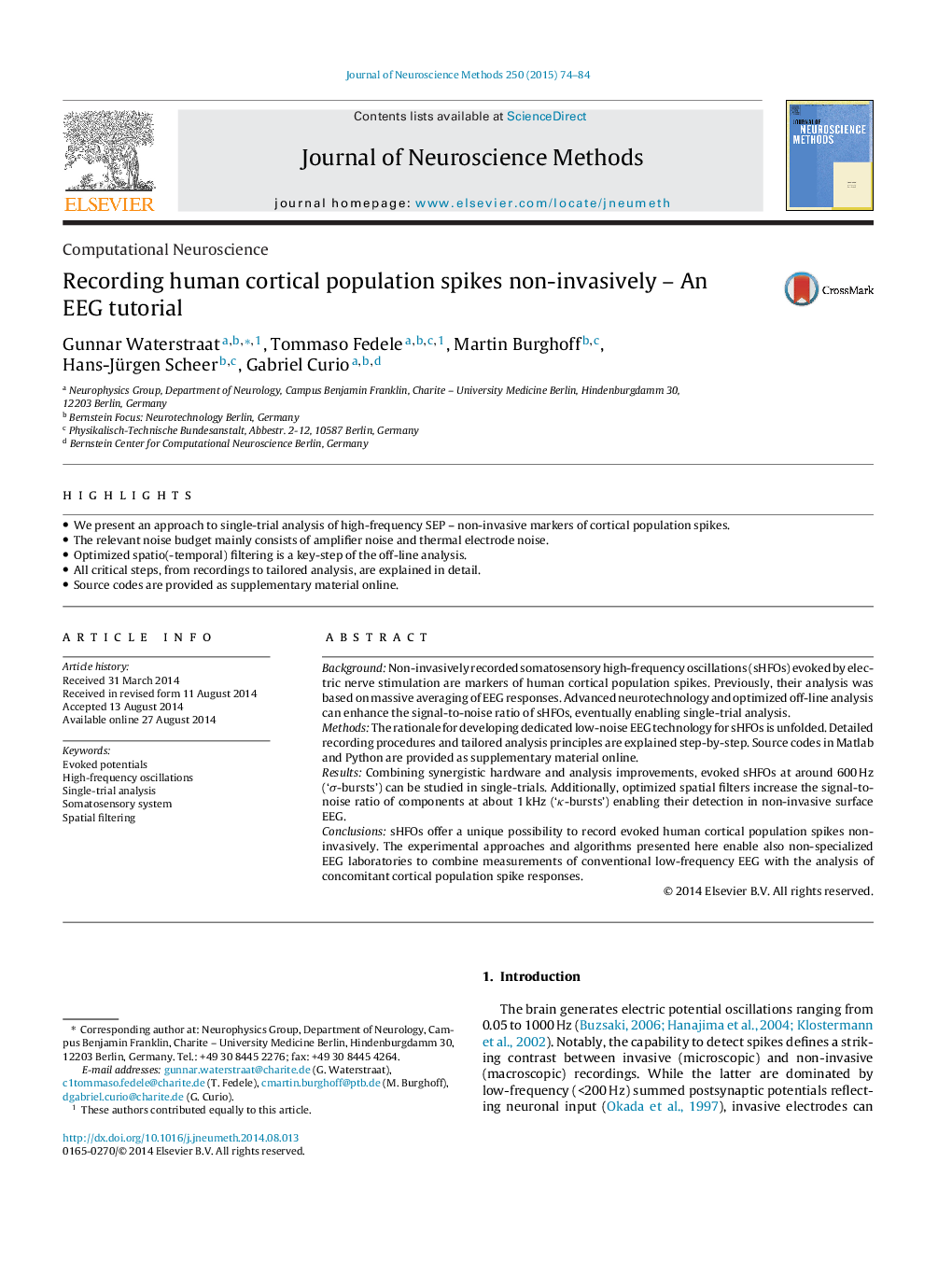| Article ID | Journal | Published Year | Pages | File Type |
|---|---|---|---|---|
| 6268204 | Journal of Neuroscience Methods | 2015 | 11 Pages |
â¢We present an approach to single-trial analysis of high-frequency SEP - non-invasive markers of cortical population spikes.â¢The relevant noise budget mainly consists of amplifier noise and thermal electrode noise.â¢Optimized spatio(-temporal) filtering is a key-step of the off-line analysis.â¢All critical steps, from recordings to tailored analysis, are explained in detail.â¢Source codes are provided as supplementary material online.
BackgroundNon-invasively recorded somatosensory high-frequency oscillations (sHFOs) evoked by electric nerve stimulation are markers of human cortical population spikes. Previously, their analysis was based on massive averaging of EEG responses. Advanced neurotechnology and optimized off-line analysis can enhance the signal-to-noise ratio of sHFOs, eventually enabling single-trial analysis.MethodsThe rationale for developing dedicated low-noise EEG technology for sHFOs is unfolded. Detailed recording procedures and tailored analysis principles are explained step-by-step. Source codes in Matlab and Python are provided as supplementary material online.ResultsCombining synergistic hardware and analysis improvements, evoked sHFOs at around 600 Hz ('Ï-bursts') can be studied in single-trials. Additionally, optimized spatial filters increase the signal-to-noise ratio of components at about 1 kHz ('κ-bursts') enabling their detection in non-invasive surface EEG.ConclusionssHFOs offer a unique possibility to record evoked human cortical population spikes non-invasively. The experimental approaches and algorithms presented here enable also non-specialized EEG laboratories to combine measurements of conventional low-frequency EEG with the analysis of concomitant cortical population spike responses.
